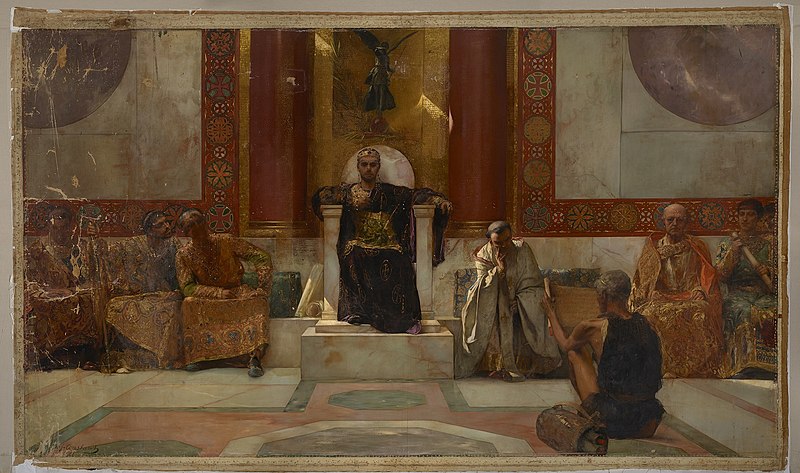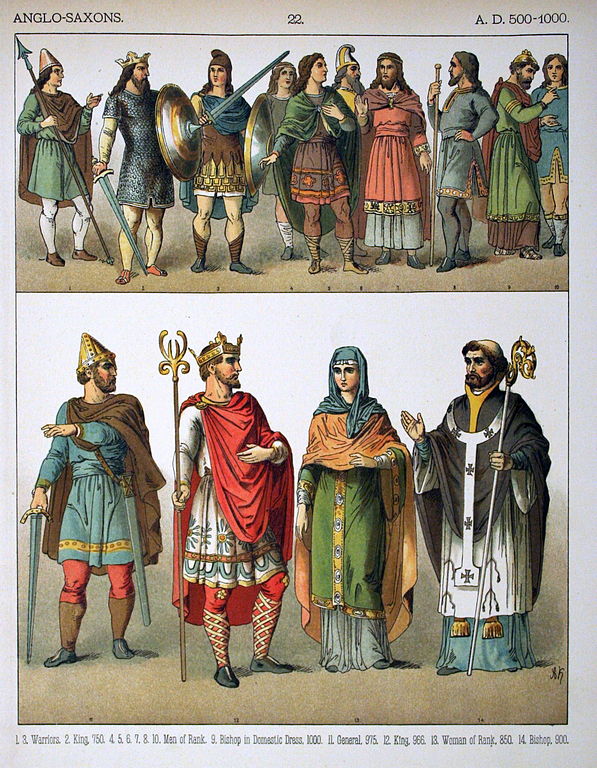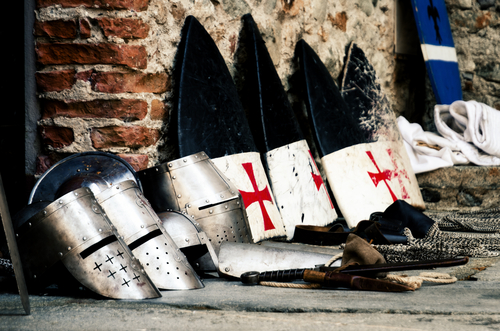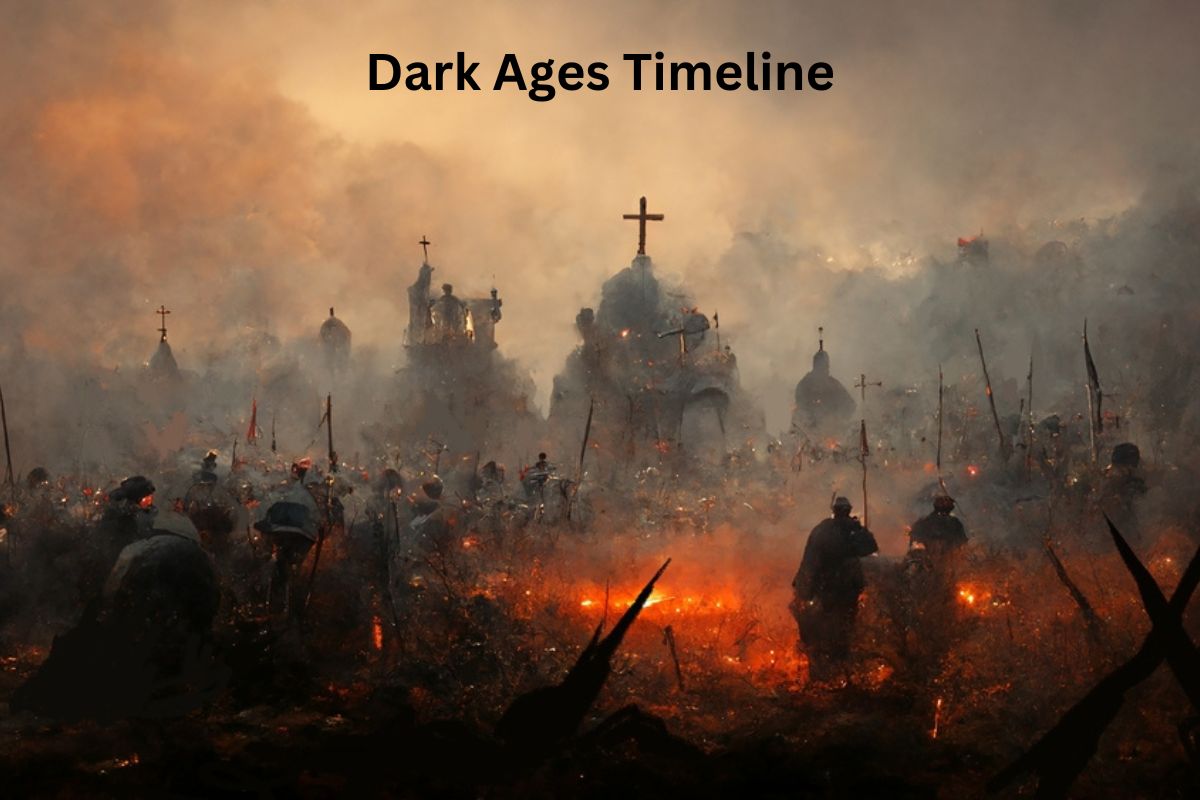The term “Dark Ages” traditionally refers to the period in European history that followed the fall of the Western Roman Empire in the 5th century AD and lasted until the beginning of the Renaissance in the 14th century.
It is characterized by a lack of centralized political authority, economic decline, cultural stagnation, and limited written records.
However, it’s important to note that this term is no longer widely used by historians, as it oversimplifies and misrepresents the complexities of this period.
Nonetheless, here is a rough timeline of some significant events during what was once called the Dark Ages:
| Time Period | Key Events and Developments |
|---|---|
| 476 AD | Fall of the Western Roman Empire |
| 5th-7th centuries | Migration Period, Germanic and barbarian migrations |
| 6th-8th centuries | Byzantine Empire thrives |
| 6th-8th centuries | Rise of Islam and expansion of Islamic Caliphates |
| 8th-10th centuries | Carolingian Empire established, cultural revival |
| 9th-11th centuries | Viking Age, Norse Viking raids and settlements |
| 11th century | Norman Conquest of England (1066) |
| 11th-13th centuries | Crusades, religious wars between Christians and Muslims |
| 14th century | Renaissance begins in Italy, revival of classical arts |
Timeline of the Dark Ages
476 AD: Fall of the Western Roman Empire
The Western Roman Empire fell in 476 AD when the Germanic chieftain Odoacer deposed the last Roman emperor, Romulus Augustulus. This event traditionally marks the beginning of the Dark Ages.
5th-7th centuries: Migration Period
During this time, various Germanic and barbarian tribes migrated across Europe, leading to the fragmentation of the former Roman territories. These migrations had significant cultural and demographic impacts.
6th-8th centuries: Byzantine Empire
The Eastern Roman Empire, known as the Byzantine Empire, continued to exist and thrive in the Eastern Mediterranean during this period, preserving elements of classical Roman culture.

The Byzantine Empire played a crucial role in preserving classical knowledge and texts, contributing to the transmission of Greek and Roman learning to future generations.
Also Read: Facts About the Dark Ages
This period saw significant achievements in art, architecture, and theology, including the construction of the Hagia Sophia and the development of Byzantine iconography.
8th-10th centuries: Carolingian Empire
Charlemagne, also known as Charles the Great, established the Carolingian Empire in the 8th century. In 800 AD, he was crowned Emperor of the Carolingian Empire by Pope Leo III, reviving the title of the Roman Emperor in the West.
Also Read: Middle Ages Facts
Under Charlemagne’s rule, the Carolingian Empire briefly unified much of Western Europe under one ruler, including modern-day France, Germany, Italy, and parts of Spain. This period is often seen as a revival of learning and culture.
Charlemagne supported educational reforms and the preservation of classical texts, leading to what is known as the Carolingian Renaissance. This period saw a renewed interest in Latin literature and the arts.
9th-11th centuries: Viking Age
The Viking Age was a period of expansion and exploration by Norse Vikings from Scandinavia. These seafaring warriors conducted raids along European coastlines, established settlements in places like England, Ireland, and Iceland, and even reached as far as North America.
Viking raids had a significant impact on the regions they targeted, and they also played a role in trade and cultural exchange, introducing new elements to European societies. The Viking Age is known for its distinctive longships, sagas, and contributions to shipbuilding technology.
11th century: Norman Conquest of England
In 1066, William the Conqueror, a Norman duke, led an invasion of England and defeated King Harold II at the Battle of Hastings. This event, known as the Norman Conquest, resulted in the Norman control of England.

The Norman Conquest had profound and lasting effects on English society and culture. It led to the merging of Norman and Anglo-Saxon traditions, including the development of Middle English, a language that combined elements of Old English and Old Norman (which evolved into modern English).
The Norman Conquest set the stage for the development of the English monarchy and language, shaping the course of British history in the centuries to come.
11th-13th centuries: Crusades
The Crusades were a series of religious wars that took place from the 11th to the 13th centuries.
These wars were primarily fought between Christians and Muslims with the goal of capturing or defending the Holy Land, particularly Jerusalem.
- The First Crusade (1096-1099) resulted in the capture of Jerusalem by Christian forces. This marked the establishment of several Crusader states in the Levant.
- Subsequent Crusades saw varying degrees of success, but none led to the permanent Christian control of the Holy Land. The Crusades had significant cultural, economic, and political impacts on Europe and the Middle East.
- They facilitated cultural exchange between the East and the West, introducing Europeans to new ideas, technologies, and goods.
11th-14th centuries: Medieval Chivalry
The concept of chivalry, a code of conduct for knights, emerged during this period. Chivalry emphasized ideals such as honor, loyalty, bravery, and courtesy.
Knights were expected to protect the weak, uphold justice, and serve their lords faithfully.
- Chivalry played a central role in the culture of medieval Europe, influencing literature, art, and the conduct of nobility.
- Knights participated in tournaments, jousts, and quests, contributing to the development of courtly love and the romantic ideals of the time.

11th-14th centuries: Gothic Architecture
Gothic architecture flourished during the later Dark Ages. Characterized by pointed arches, ribbed vaults, and flying buttresses, Gothic cathedrals and churches reached new heights in terms of design and engineering.
- Notre-Dame Cathedral in Paris and Chartres Cathedral in France are prime examples of Gothic architecture, showcasing the craftsmanship and innovation of the era.
- These structures not only served as places of worship but also as symbols of the grandeur and piety of the medieval Christian world.
14th century: Renaissance
The 14th century marked the beginning of the Renaissance, a cultural and intellectual movement that swept across Europe.
While it is often seen as the end of the Dark Ages, the transition was gradual.
- The Renaissance was characterized by a renewed interest in classical art, literature, and learning, inspired by the rediscovery of ancient Greek and Roman texts.
- Italian cities like Florence and Venice played pivotal roles in fostering the Renaissance, with artists and scholars like Leonardo da Vinci and Petrarch contributing to its development.
- The Renaissance laid the groundwork for the transformative cultural and intellectual developments of the following centuries, including the Age of Exploration and the Scientific Revolution.
